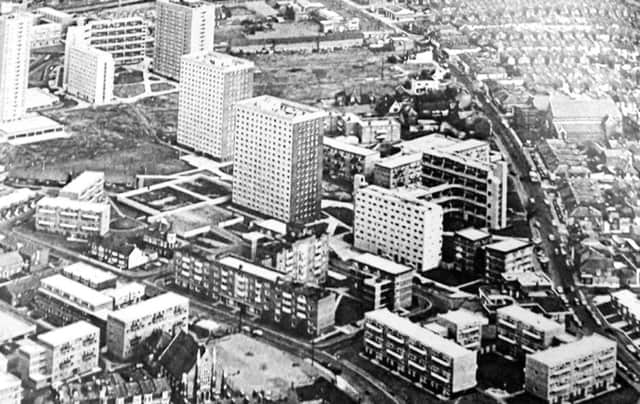How much would those '˜unfit' Portsmouth terraced homes be worth today?


There always seems to be a DIY wizard who buys a terraced house which is unfit for human habitation and then turns it into a palace.
I was thinking of this when I saw that in 1966 Portsmouth City Council decided on a clearance programme to demolish 6,100 uninhabitable properties. The future of yet another 854 houses within the council’s green area was undecided.
Advertisement
Hide AdAdvertisement
Hide AdIn 1970, the authority suggested a number of properties in a compact area north of the railway cutting from Fratton Bridge to the Jacob’s Ladder footbridge, a total of 158 houses, should also be added to the clearance programme.
These were: 3-77 and 2-90 Lucknow Street; 1A-55 Sydenham Terrace; 226-238 Somers Road North, and 1-31 Fratton Road.
The village atmosphere that existed in these areas, with small privately-run shops and local pubs, would be lost forever.
The residents were moved from much-loved terraced houses into high-rise blocks of flats, immediately losing the sense of community that once existed.
Advertisement
Hide AdAdvertisement
Hide AdWere these houses really so unfit that hundreds of people had to be moved, leaving a landscape that would change forever?
I wonder what would have happened if these houses were still around? What would those DIY experts make of them with all the modern building aids available from the likes of B&Q?
Did you live in any of the properties demolished in the clearances? Were the houses really so bad they could not be modernised? If you remember these times and lost your home, please drop me a line.
• Angel Radio, the Havant-based radio station, can now be heard all over Portsea Island as it changed wavebands on Wednesday.
Advertisement
Hide AdAdvertisement
Hide AdIt is now transmitting on 89.3FM and can be picked up from Chichester to Fareham and over the downs to Petersfield.
DJ Pete Cross, who has been at the station for more than a decade and has a ’60s show on Saturday mornings, tells me he is delighted.
Today his show, from 9am until 11am, is featuring many Portsmouth clubs from the era such as the Birdcage, Savoy, Locarno and the Tricorn. He is also featuring local bands such as Simon Dupree and the Big Sound.
• Remember when the beach at Hayling Island was nothing but sand from east to west?
Advertisement
Hide AdAdvertisement
Hide AdMany of us used to board the Hayling Billy train at Havant and on arrival at South Hayling station walked along Staunton Road to the beach. As soon as the coast road was crossed it was a run to the sandy beach and then a race to be first into the sea.
Great fun; mind you, sandwiches became just that – sand-wiches – and I can still feel the grit in my teeth from the grains between the slices of bread.
This all ended in 1985 when a £4m beach replenishment scheme to save the island from flooding took place. More than 830,000 tonnes of shingle was laid across the sand, covering it many feet deep.
The island had suffered severe erosion over the centuries and there are tales of a church that once stood a quarter of a mile offshore.
Advertisement
Hide AdAdvertisement
Hide Ad• John Porter tells me of a time the recently-closed Battle of Minden pub in St Mary’s Road, Fratton, became a laundry.
He says: ‘The pub closed at 2pm on a Sunday and loads of us kids arrived at 3pm for a party. Cakes, sandwiches and lemonade were on the bar. There were so many kids the floor collapsed when a joist snapped and we all fell into the cellar. No-one was seriously hurt but we were covered in dust.
‘Mr Palmer, who had the grocery shop next door, said he could smell gas and phoned the police. A police car arrived, then a gas company lorry,then a fire engine. The gasmen dug up the road and the children played on the fire engine. It was after this that the pub was converted to a Daisy Dampwash laundry.’